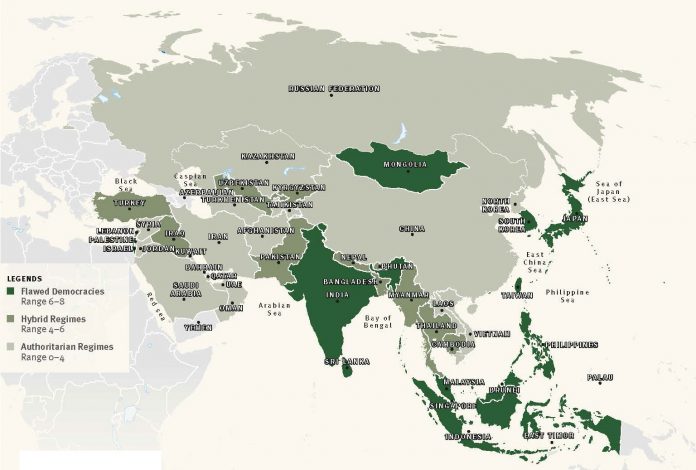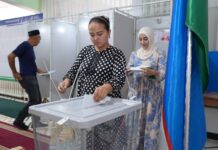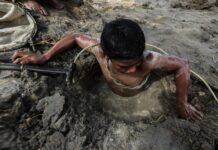Democracy is a label applied quite liberally by states, but it’s worth noting that while several countries proclaim themselves as democratic, this is not always the case in practice. Democracy is understood to be a political system that elects its governments through free and fair elections, and which requires the active participation of citizens in politics and civic life. By this definition, the application of the label to the political landscape of some states that declare themselves democratic requires a hefty pinch of salt – which is why we’ve included the country’s ranking in the Democracy Index as a means of measurement.
The Democracy Index
Categorises countries as one of four regime types:
FULL DEMOCRACIES (RANGE 8–10)
There are no countries that are deemed full or “pure” democracies in Asia
FLAWED DEMOCRACIES (RANGE 6–8)
Practise free elections but may have weak governance, an underdeveloped political culture and poor levels of political participation
HYBRID REGIME (RANGE 4–6)
Combine democratic traits, such as elections, with autocratic practices, such as political repression
AUTHORITARIAN (RANGE 0–4)
Countries ruled by a single government or person who has unlimited authority, and where people have limited political freedoms
Check out the rest of this article in Asian Geographic No.126 Issue 4/2017 here or download a digital copy here











